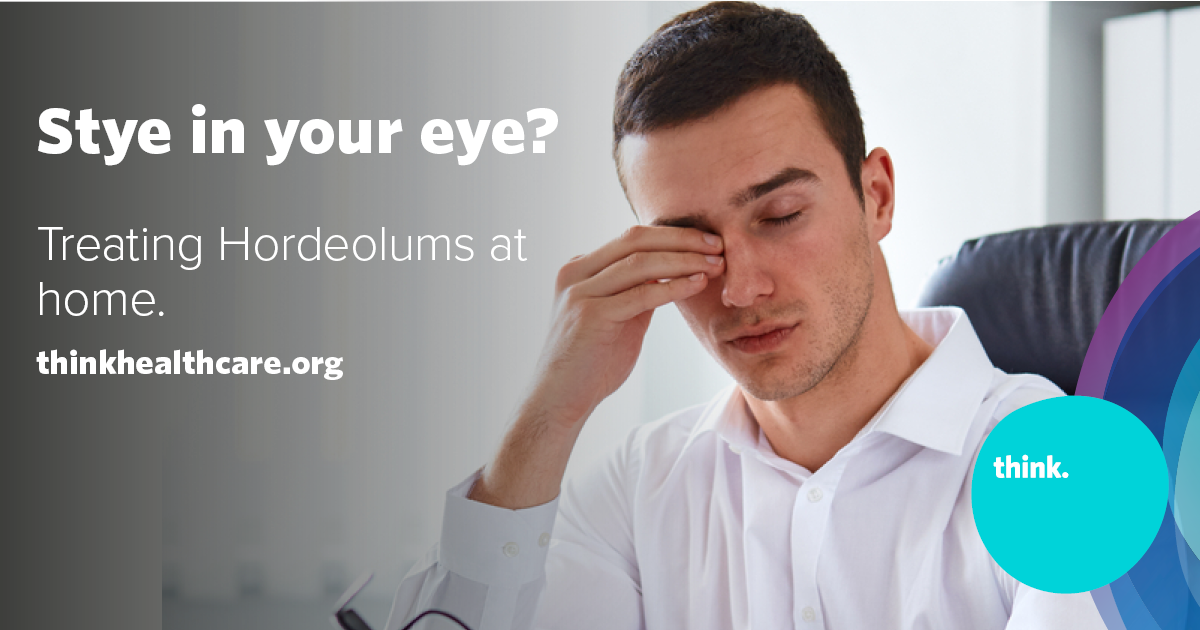How to recognize and treat a stye at home.
Chances are, sometime in your lifetime, you will have the unfortunate opportunity to deal with a stye. Otherwise known as a Hordeolum, styes can be quite bothersome and painful. But most times, they clear up on their own.
Types of styes
Let’s talk about the anatomy of a stye and what causes them. There are two basic types of styes, internal and external. The most common type of stes are External styes.
External styes develop when the small oil glands on your eyelid become blocked, and become infected. The infection can cause swelling and redness of the eyelid and are often painful.
Internal styes develop when Meibomian glands (oil glands) become infected. Internal styes present as bumps on the inside of the eyelid and often have white centers and are quite painful. Internal styes are rarer than external styes.
Common ways we get styes
There are quite a few ways a person can develop a stye. The most common is poor hygiene. On average, humans touch their faces 16 times every hour! Dirt, germs, and bacteria are transferred from unwashed hands to our eyes throughout the day.
Skin type can also play a big role in the development of styes. Certain skin conditions like ocular rosacea and seborrheic dermatitis can create a higher risk for styes.
Hordeolum are rarely contagious unless you misdiagnose your condition and its pink eye. If you are not sure if you have a stye or other medical condition, it’s best to see your Primary Care physician or optometrist for diagnosis and treatment. However, if you are certain it’s a stye, here are some home remedies you can try to help speed up the recovery time.
How to speed up healing your stye
The most important one is to stop irritating your eye. Discontinue wearing makeup (in fact, you may want to replace your makeup as it is more than likely contaminated). Also, don’t wear contacts while your stye is healing. And try very hard not to rub your eyelid.
We recommend a warm compress 5-10 minutes several times a day for your infection. Warm compresses not only provide relief, but the warm moisture will help the stye drain itself. A word of caution: Don’t use overly hot compresses as you can burn and damage your sensitive eyelid tissue. Very light pressure can also help coax the stye to drain. Be careful not to apply too much pressure and rupture the stye. Popping a stye can lead to spreading the infection.
There are several effective over-the-counter medications for treating styes. These medications can help facilitate the healing process. Most ointments have a lubricating ingredient that will help soothe your inflamed eyelid. They may also include a numbing agent or even a mild antibiotic. If you opt to use an over-the-counter medication, be sure to follow the package instructions and let your physician know you are using the medication. For stubborn styes, you may need to see your doctor, who can prescribe stronger medication.
If you have frequent recurring styes, you may want to try cleansing your eyelids/eyelashes daily with baby shampoo. Washing can help prevent recurrent styes. Apply the shampoo with your fingertip along the edge of the lid and rinse well.
How to avoid a stye
The best way to avoid a stye is to change behaviors that can lead to a stye. Here are the top six tips to avoid these painful infections:
- Use good handwashing techniques.
- Use clean makeup brushes and don’t share eye makeup
- Wash your face and don’t wear makeup to bed.
- Use eye protection if you are creating a lot of dust or debris particles
- Clean your contacts and replace them whenever they expire
- Take care of your underlying health issues. Even diabetes can play a role in the development of styes.
Common concerns or questions about styes
- Most styes will heal themselves after three to seven days. If your stye persists or doesn’t look like it’s getting better, consult your doctor.
- Styes aren’t contagious. But, you can infect your other eye by touching your affected eye and not washing your hands. Styes should not be popped or lanced. Always allow styes to drain on their own. Some internal styes may heal on their own without breaking open.
- If you get styes frequently, be sure to speak to your doctor about them. Underlying medical conditions may be causing them.
- If you experience a sensation of something stuck in your eye, try not to rub or probe around looking for a foreign object. You could scratch your eye or cause other damage.
- Pink eye (conjunctivitis) and styes are very similar in many ways. Early in the development of a stye, it’s hard to tell the difference between the two. Once a red bump appears, you can confidently diagnose your ailment as a stye.
- If your stye persists for more than seven days, make an appointment with your Primary Care provider or optometrist at think. We offer same-day appointments with our Primary Care providers who can diagnose and treat your stye quickly and effectively. In the meantime, sit back and enjoy a soothing warm compress.
